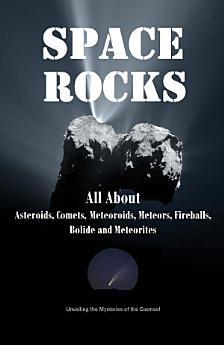Space Rocks
About this ebook
This book follows their story from past to present. It explores their origins in the birth of the solar system, the long paths they take through space, and the moments when their journeys cross with Earth. It considers the craters left by their impacts, the meteorites collected and studied by scientists, and the great missions that have travelled across millions of kilometers to meet them face to face. Each step reveals how these objects are not random debris, but keys to understanding both our past and our future.
The chapters are written for anyone who shares curiosity about the universe, not only for experts. They combine history, science, and discovery in a way that makes complex ideas clear and meaningful. Space rocks are more than stones scattered in the void. They are storytellers that carry records of creation, reminders of how fragile our planet can be, and guides to possibilities yet to come.
About the author
As I look up at the night sky, I can’t help but think about the journey that led me to my passion for astronomy.
It all started when I was a child, asking endless questions out of pure curiosity. I recall pestering my father with whimsical queries, such as "How long would an ant take to circle the moon?" – A testament to my naivety about the moon's enormity.
The stars had always fascinated me, but one moment stands out. During a power outage, I stepped onto the rooftop and saw the night sky in all its clarity. That view left an impression on me. Around the same time, I found myself drawn to science books, especially the sections that explained the difference between stars and planets. My growing interest even helped me score high in a 1995 geography test that included astronomy questions.
But what truly deepened my love for space was an unexpected experience with virtual reality. While visiting a mall, I tried an Oculus Rift demo called "Deep Space VR." The experience was unlike anything I had ever felt before.
As soon as I got home, I searched for similar content on YouTube, and before long, I bought my own VR headset.
As I explored more about space, I came across a YouTube video promoting Flat Earth theories. It was surprisingly convincing at first, and I found myself questioning what I knew. But instead of blindly accepting the claims, I decided to investigate for myself. That’s when I bought my first telescope - Celestron PowerSeeker 50Az. One of the claims, that the moon emits its own light, was disproven when I observed the shadows within moon craters – a phenomenon impossible if the moon were self-luminescent. That moment changed everything. I moved away from pseudoscience and focused on real space exploration. Over the years, I studied astronomy intensely, gathering knowledge and refining my understanding. Eventually, I felt the need to share what I had learned in a way that was easy for others to understand. That’s how the idea of writing a book was born.
Looking back, I realize that curiosity is what led me here. The universe has a way of pulling us in, making us ask questions, and pushing us to explore beyond what we know. And for me, that curiosity turned into a lifelong passion.







